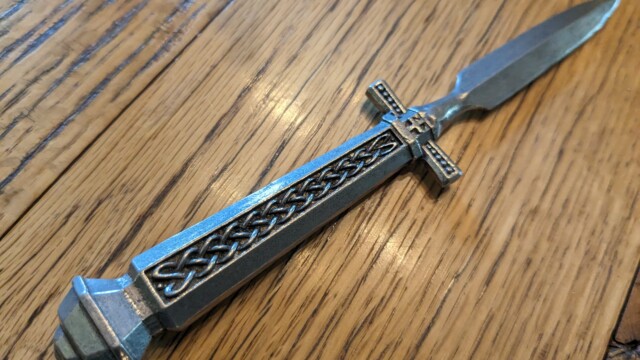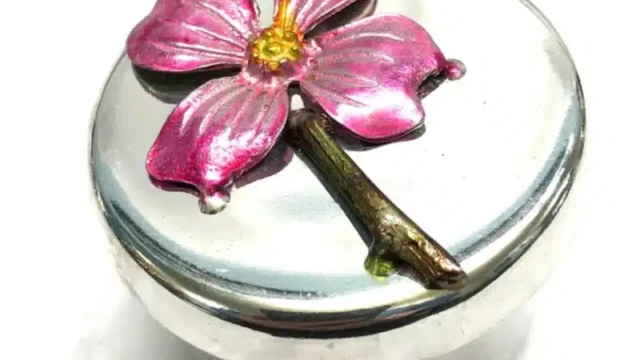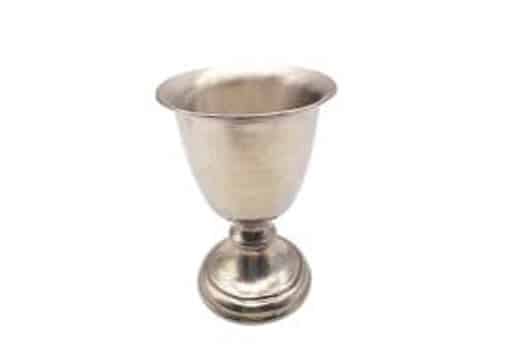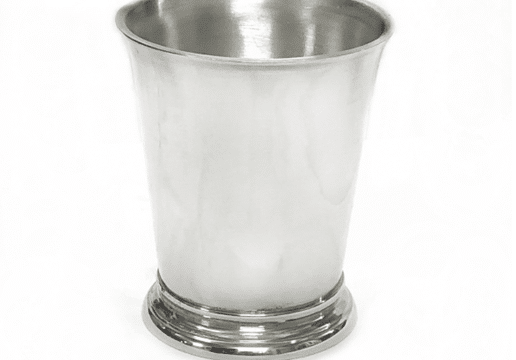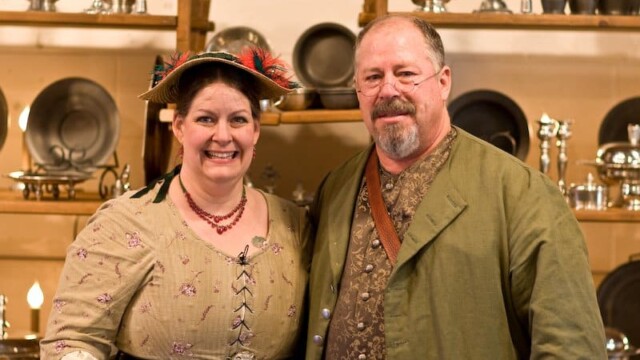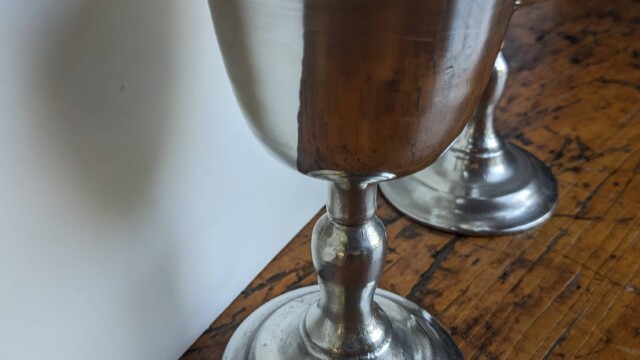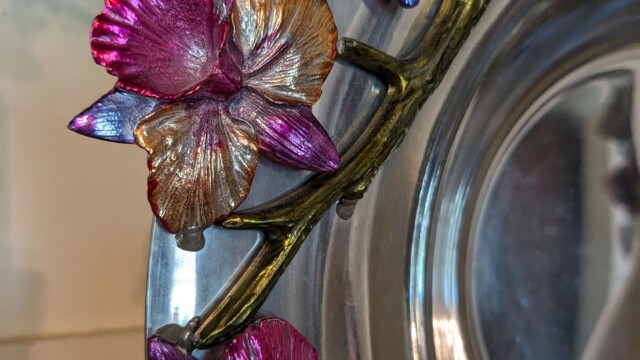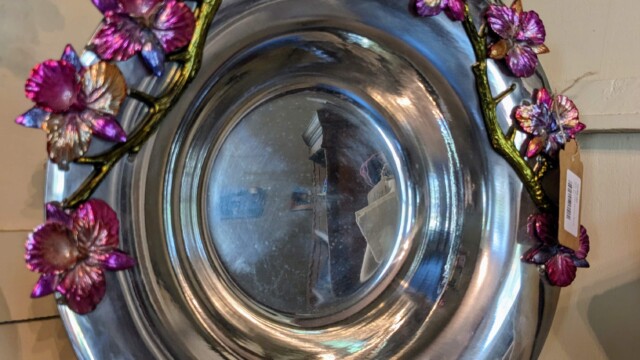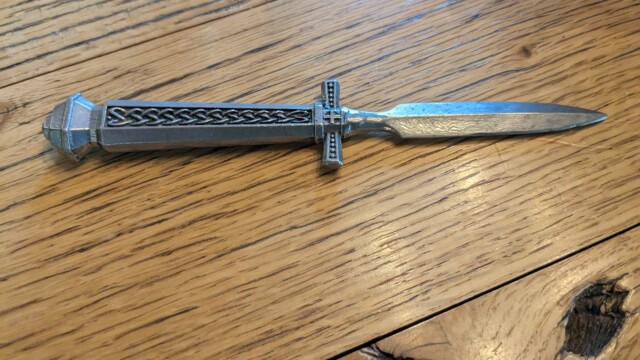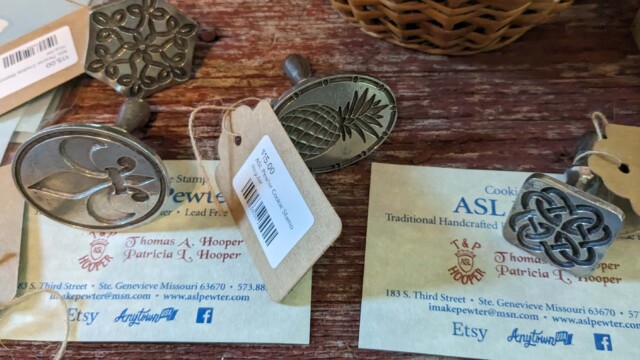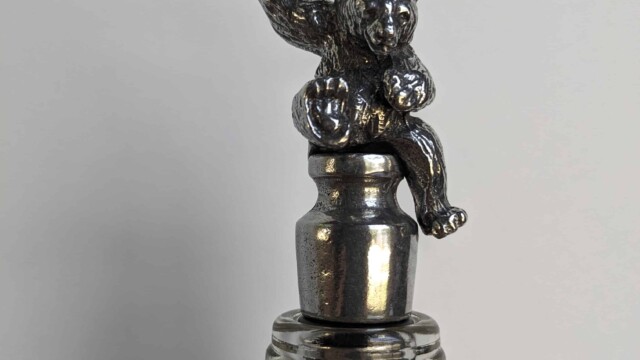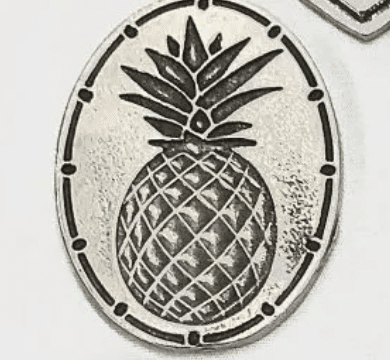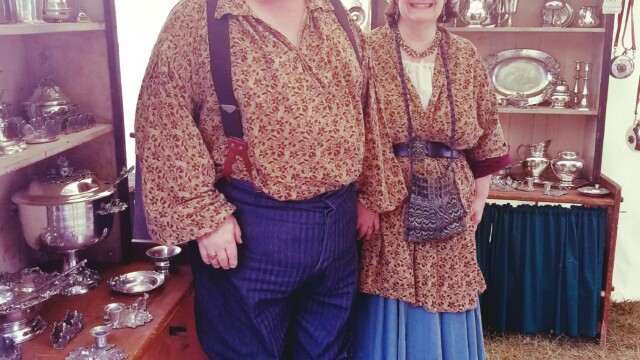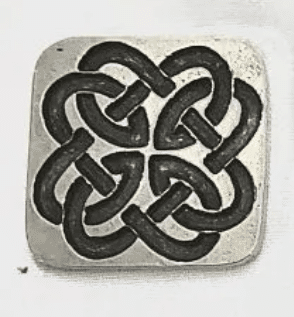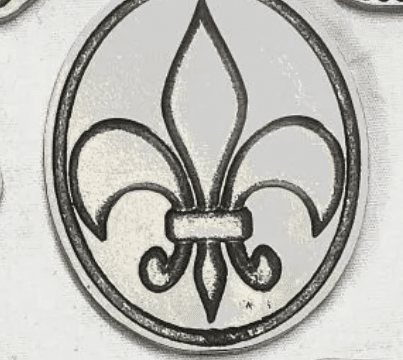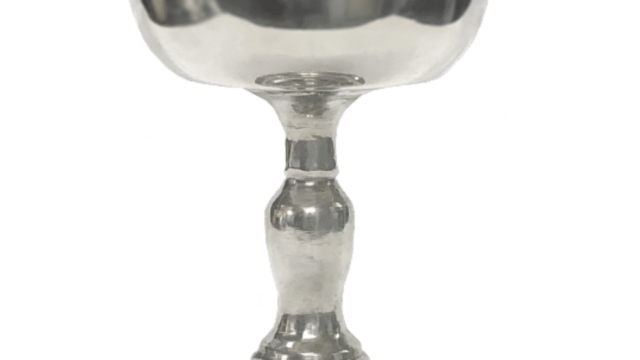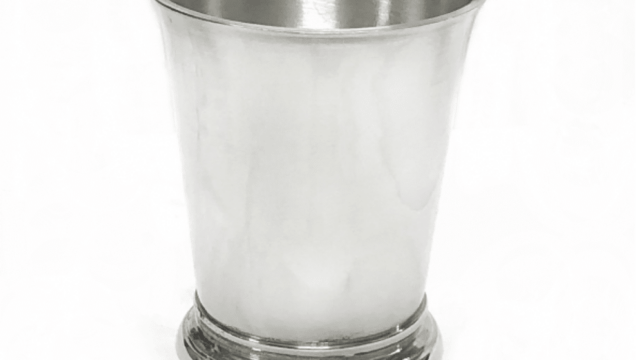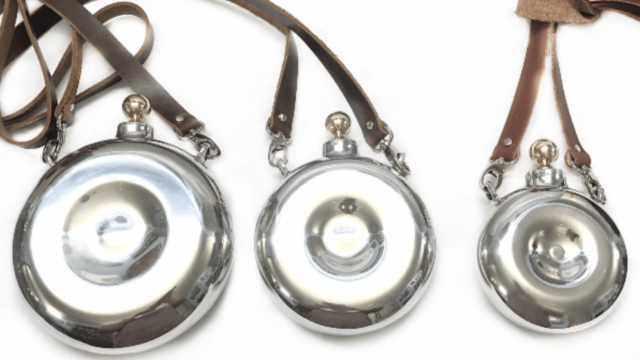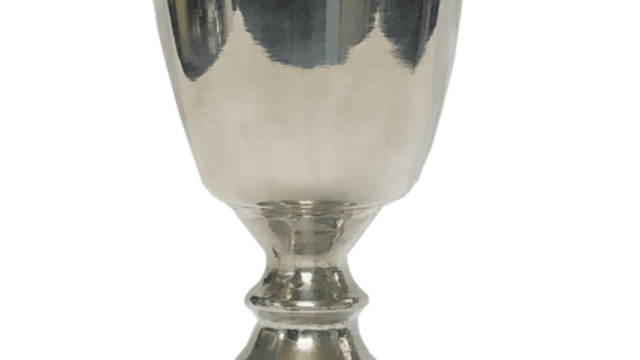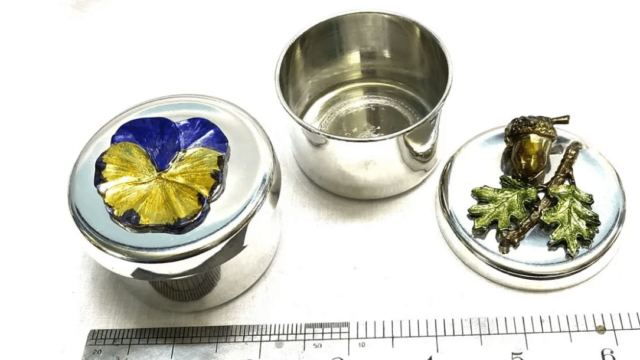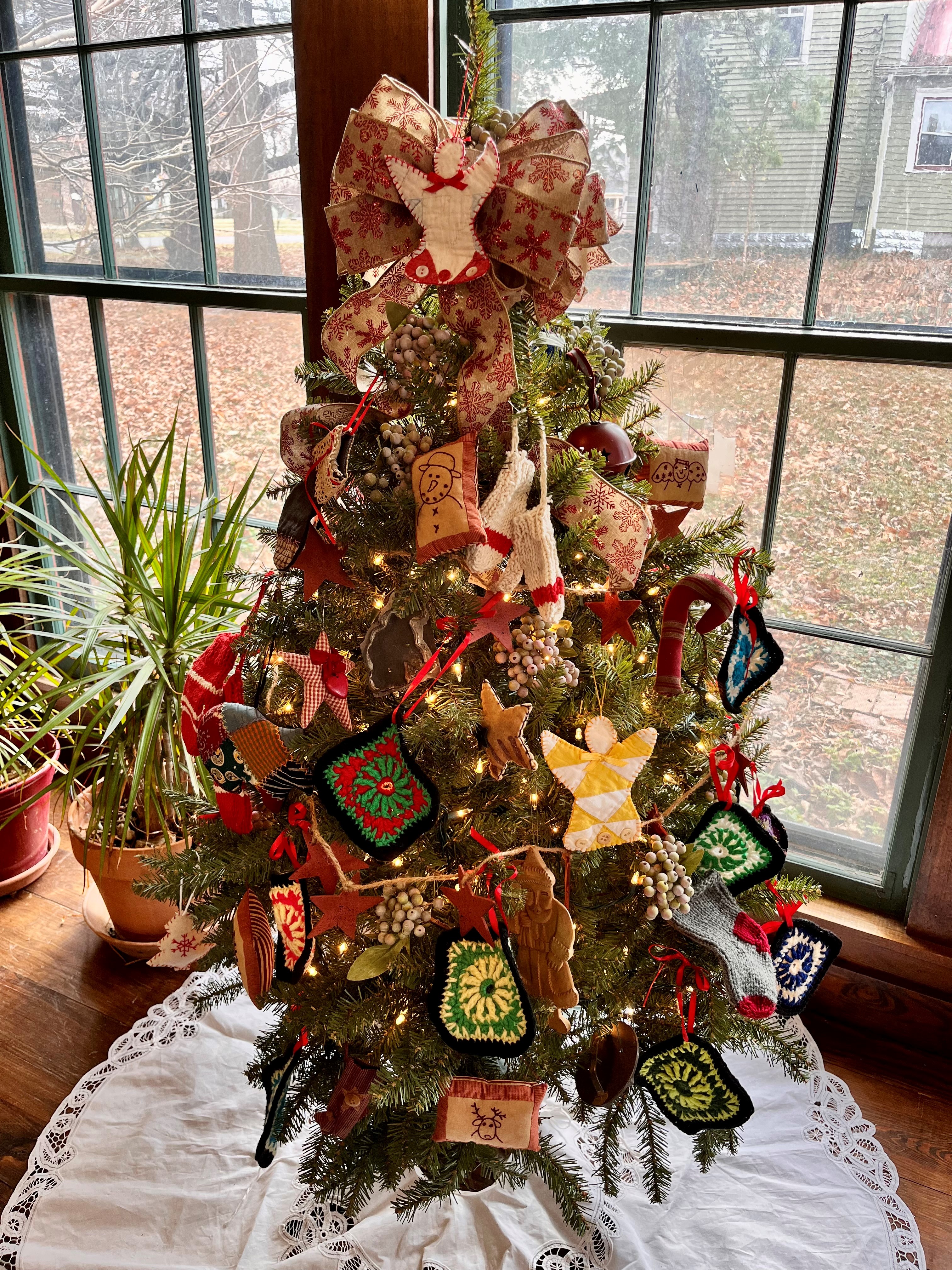Nationally known for their craftsmanship, Tom and Pat Hooper at Ste. Genevieve make both historically accurate and contemporary pewter kitchenware and more. Perhaps one of their beautiful and functional pieces will be your family’s next heirloom.
By Danita Allen Wood
Scottish shortbread cookie stamps, port cups, Portuguese candle holders, New England beakers, salt cellars, Colonial table chalices, Scottish quaishes (two-handled drinking cups). Wine tastevin sommeliers (wine-tasting cups)—if it was made of pewter at any point in history, Thomas and Patricia Hooper at ASL Pewter have made it.
Tom is the master craftsman, and Pat is the master saleswoman, as well as a pewtersmith herself. Either one can tell you anything about when and how the pewter was used in the past. But they also are both entertainers. When showing off a three-pint mug, either one might say, “Honest, honey, I’ve only had one.” If you’re lucky, you might find them in historical costume in their shop at 183 3rd St, Ste. Genevieve, where they do daily demonstrations of their craft.
Tom might be applying pressure with wooden tools to pewter on a lathe to shape it or welding and hammering it. Pat might be pouring pewter into a mold or doing the fine finishes.
About those molds: Tom and Pat began collecting them and haven’t stopped. They have about 200 molds predating 1840, one spoon mold dating to 1650, and a few Paris molds from the 1700s, one of which is a 1750 mold for a crucifix.
While historically accurate pewter is a specialty, the artisans have also added whimsical touches to many pieces, giving them contemporary flair, as well. A pewter box with a magenta dogwood on the lid, a soap dish with a mermaid alongside, or an oil lamp with octopus tentacles on the base are examples. “Is that traditional? No.” Pat says. “But is it fun? Oh, heck yes!”
What is pewter? It is one of the oldest known alloys, dating back to the Bronze Age. Pewter is a tin-based alloy, with some combination of silver, copper, bismuth, or antimony. ASL Pewter’s alloy is the same one designated by the London Pewterer’s Guild as “Fine Pewter” in 1635 and consists of 92% tin, 2% copper, and 6% antimony. Their pewter is 100% lead-free, so it can be used for food and beverages. And while the fine finishes of pewter glow like silver, pewter does not tarnish or need to be polished. You simply wash it with warm, soapy water and dry it with a soft, dry cloth. Pat says, “We’ve heard that Martha Stewart called pewter the tupperware of the 18th century, because it was so emblematic of the middle class.” She uses that line a lot with customers.
The Hoopers are known nationally for their fine pewter craftsmanship. They made all the pewter pieces you see in the HBO John Adams miniseries, have done custom work for Disney, Universal Studios, Colonial Williamsburg, George Washington’s Gristmill, the US Supreme Court, and The Sydney Opera House in Austrailia, amongst many other special commissions. They were honored to create ornaments for the White House Christmas tree in 2002.
Pat and Tom met in 1989, while they were both living in Sacramento. Tom grew up in Fresno and Pat at Redondo Beach. They met at a Renaissance Faire in Hanford, where Tom was making incense and fragrances. Kindred creative spirits and both passionate about American history, they married in 1990 a year later at the same Renaissance Faire.
Tom taught himself pewtersmithing when customers of his incense and fragrance business began asking for accessories. They moved to Missouri in 1995, to Salem. They chose Missouri because of the low cost of living, the low taxes, increasing and difficult-to-meet regulation on their foundry, and the central location, as they were participating in art shows nationwide. In 1999, they moved to Clarksville, and eventually to Louisiana, Missouri, and were part of the Provenance project dedicated to building a coordinated arts community in Hannibal, Louisiana, and Clarksville.
After begging and pleading with Harry Schneider, a pewtersmith located in Rocheport, to teach him, Tom learned metal spinning in 1998. Years later, when the student had surpassed the teacher, Harry would ask Tom, “Show me what you’re doing that you can’t be doing”—because Tom would push the metal as far as it would go and beyond the limits of most pewtersmiths. He did this by free-form air spinning the metal. A bowl with ruffled edges, an oil finger lamp with a bell-shaped form at the top, and a kitchen salt bowl with a flared top edge are examples.
“I see a shape of something, and then I try it. I can always melt it down if it doesn’t work, like my parents should have done with my little brother,” Tom says, jesting.
Tom and Pat also give back to their communities and have been actively involved everywhere they have lived. They’ve served as officers in the Best of Missouri Hands and are charter members of Traditional Handcrafters of America. Tom has served on the Ste. Genevieve Tourism Tax Commission, and Pat has been Vendor Coordinator for Ste. Genevieve’s French Heritage Festival. Tom is currently the Landmarks (Historic Preservation) Commission.
Their shop in Ste. Genevieve showcases all of their beautiful, functional pewterware, perhaps destined to become your next family heirloom.
Meet the Hoopers on Missouri Life TV Season 4 at https://missourilife.com/mltv.
See selected items at Missouri Life Mercantile in Rocheport or at MissouriLife.com/shop
Or visit https://aslpewter.com.
Related Posts
Missouri Life wishes you Merry Christmas
We all wish you a warm and wonderful holiday season. During this time of joyous celebration, thankfulness, and reflection, we are grateful to you, for being a member of our Missouri Life family.
My Missouri Life
Missouri Life magazine's new editor-in-chief, Sandy Selby, greets readers through the My Missouri Life column.
I popped up from my nest of pillows and books in the back of the family station wagon and announced, “I’m going to live in Missouri when I grow up.” I made that declaration at age nine as my family traveled from our home in northeastern Oklahoma to Branson for a vacation.
Revitalizing Missouri Downtowns
Here’s how Missourians are working together to revitalize downtowns across the state.


